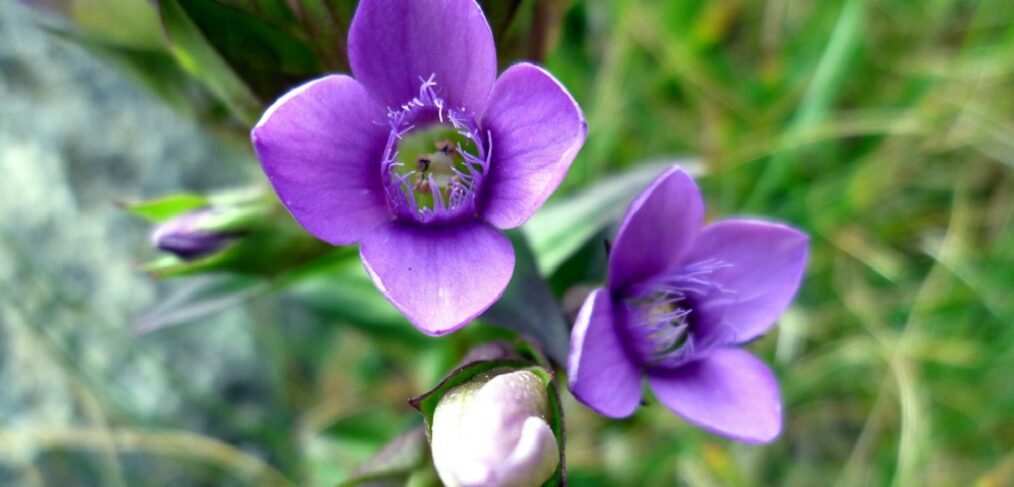
species of the week #71- field gentian
What do you do when you need nutrients but live in a barren area? You look for a good friend who provides minerals and give him sweets in return. What sounds like the story of the cricket playing the violin and the mole describes the coexistence of gentian and root fungi. The fungi (mycorrhiza) surround the root of the gentian, protecting it from drying out and supplying it with nitrogen and phosphorus. In return, the plant supplies the fungus with sweet glucose, which it produces by photosynthesis.
| Distribution status | Extinct in Rhineland-Palatinate |
| Remaining deposits | Bavaria |
| Last sightin in rhineland-palatinate | In Saarburg, currently botanical garden Mainz |
| Habitat | dry, sunny rough grasslands and meadows |
| Threat | Fertilisation, pesticides, scrub encroachment of rough pastures, biotope fragmentation, abandonment of transhumant sheep farming
|
Unfortunately, mycorrhizal fungi are very sensitive to pesticides. However, if the soil fungi die off, the gentians cannot survive either, as they lack the minerals. As a result, they also die.
The gentian is an evergreen, blue-flowered plant that many classify as a typical Alpine plant. However, like other gentian species, it occurs at lower altitudes. In Rhineland-Palatinate, the gentian was last found only in Saarburg. This population is also extinct today. The gentian grows up to 30 cm high, its flower is about 2 cm in diameter and has four petals arranged in a cross. In the centre is a wreath of purple fringes, characteristic of the wreath gentians.
Lean pastures or roadsides, but also sparse areas in woods, at an altitude of 600 to 2700 m above sea level are preferred habitats. On sunny, light meadows, the biennial plant flowers from June to October.
Another good friend of the gentian is the sheep. It helps the plant to spread: the flightless seeds get stuck to the sheepskins and are sometimes transported over long distances. Due to the decline of transhumance because of the severely limited migration possibilities caused by roads and settlements, the gentian is also no longer spread.
For these reasons, the pitcher gentian has also become extinct. Individual remnants of the cross gentian, German gentian and marsh gentian still exist in the southern Palatinate and on the German-French border near Dahn.
Here it goes to further species of the week
Image: By Isidre blanc – Own work, CC BY-SA 4.0, https://commons.wikimedia.org/w/index.php?curid=37653528
